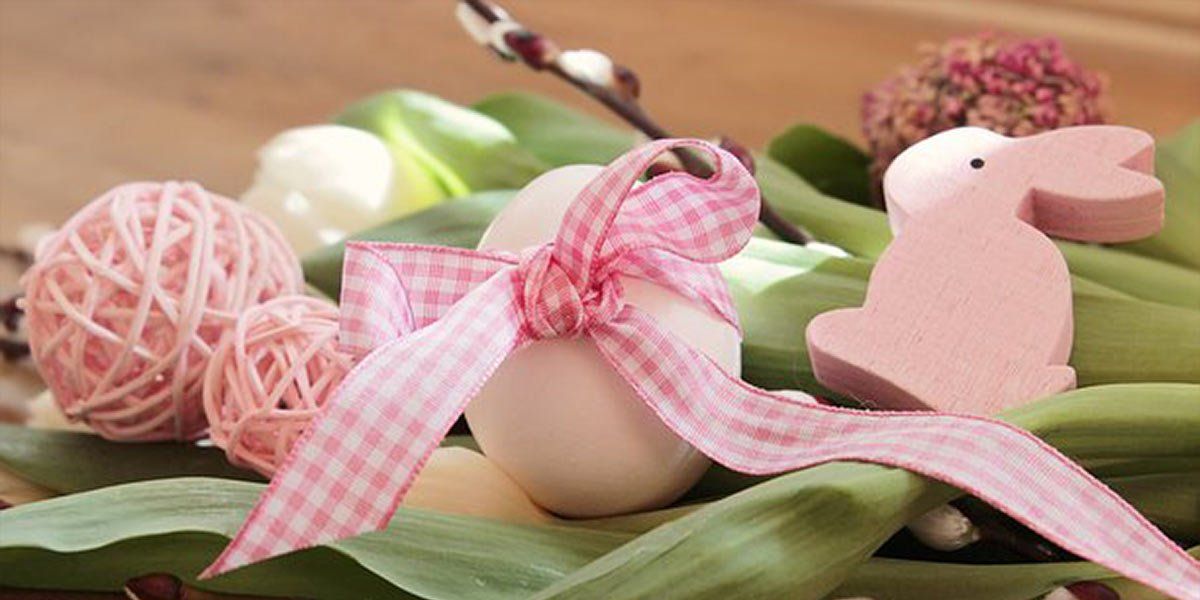
Easter Customs
Written by Michaela Harrington
From Easter eggs (Ostereier) to the Easter Bunny (der Osterhase), the U.S and the German-speaking world share many Easter traditions. Though one of the most important holidays in the Christian calendar, Easter takes many of its traditions from European pagan religions. This is due to the fact that when Christianity was first expanding into Europe, the Church tolerated the incorporation of certain traditions in order to make the process of conversion go as smoothly as possible. What is now celebrated today as Easter was combined with various pagan holidays dedicated to the vernal equinox and the coming of spring. So while Holy Week and Easter are celebrated in church, many of the symbols associated with them—such as hare and eggs—have roots in pagan symbols of fertility and rejuvenation.
The exact origins of these folk symbols are difficult to pin down. The term Easter is believed to derive from the name of a Germanic goddess Eostre, or Ostara, who is thought to be a goddess of fertility. However, little is known about her since few records of her exist, so this claim cannot currently be proved with any certainty. This goddess is also seen the origin of the Easter Bunny, since it is believed that the hare was one of her symbols. However, another explanation is that since rabbits reproduce in the spring, and are therefore greatest in number during that time of year, that they simply became associated with the coming spring—and Easter—over time.
The egg was also a symbol of birth and fertility in pagan cultures, but fit neatly with the Christian tradition of fasting during Lent. Since eggs were given up during Lent, they were cooked so that they could be kept longer, and they were allowed to be eaten again on Easter Sunday.
A uniquely German Easter tradition is that of the Osterlamm, or Easter Lamb, a traditional Easter cake that is baked into the shape of a lamb. This is a direct reference to Jesus Christ, who is represented as a lamb in Christian tradition, and is often called the Lamb of God.
Another German tradition of purely Christian origin are Osterkerzen (Easter candles). These are candles that are lit on the evening of Good Saturday and burn into Easter morning. This tradition dates back to the fourth century and is meant to symbolize Jesus returning from the dead, and bringing the “light” of Christianity to the world.
There are also German customs that are more connected to pagan traditions. One such custom is Osterwasser (Easter water). According to this belief, bathing in a running stream is thought to keep one young and beautiful. This tradition stems from pagan associations of water with life and fertility. Das Osterfeuer (Easter fire) also has its origins in pagan rituals. The end of a cold winter was met with fire at the start of spring, in order to strengthen the sun and bring nourishment back to the Earth.
Many of these traditions continue to be practiced today. In the U.S. the White House holds an annual egg hunt, complete with an Easter Bunny mascot. In Germany, Austria, and Switzerland, Easter markets are held in the weeks leading up to Easter Sunday. These markets are a venue to showcase both craft-making skills and traditional Easter foods. Some pictures of the 2017 Easter market at Schönbrunn Palace in Vienna show the types of goods and events that are common at these markets: http://www.ostermarkt.co.at/